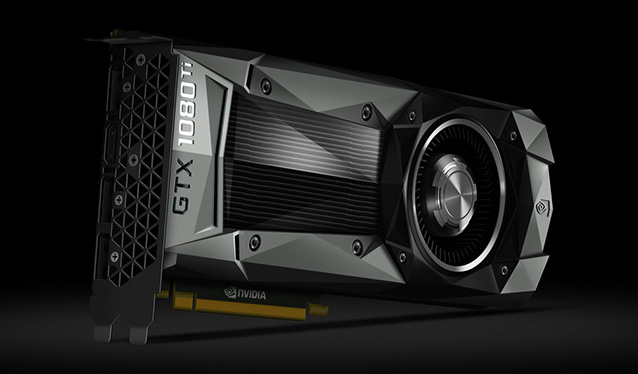Comparison: geforce gtx 1080 ti vs geforce gtx 1080

Table of contents:
The new Nvidia GeForce GTX 1080 Ti graphics card is here, rumors say that its presentation should have been at CES 2017 in January but was delayed due to the absence of AMD Vega at the event. With this we have had to wait almost two months but finally the most demanding players already have a new and expensive toy with which to entertain themselves. The GeForce GTX 1080 Ti arrives with the Pascal GP102 graphics core, this GPU is nothing new but it is the first time that we see it on a graphics card 100% dedicated to video games. We've tested the new card and compared it to its younger sister GeForce GTX 1080 to see the difference in performance and whether it's worth the jump.
GeForce GTX 1080 Ti vs GeForce GTX 1080: features

The GeForce GTX 1080 Ti includes the advanced Pascal GP102 graphics core which is made up of 3584 CUDA Cores, 224 TMUs and 88 ROPs operating at a maximum speed of 1.6 GHz in the “Founders Edition” reference model. This core is built with TSMC's 16nm FinFET process so it is very energy efficient and can maintain a TDP of 220W, a number highly committed to a very high end graphics card.
Nvidia Geforce GTX 1080 Ti Review in Spanish (Full Review)
On the other hand, the GeForce GTX 1080 complies with the Pascal GP104 graphics core, which is more modest and which consists of 2560 CUDA Cores, 160 TMUs and 64 ROPs at a maximum frequency of 1.7 GHz in the reference model. This core is also manufactured using TSMC's 16nm process and has a TDP of just 140W, marking a tremendous leap in energy efficiency upon arrival.
Nvidia GTX 1080 Review in Spanish (Full Review)
When it comes to memory, both cards use the advanced GDDR5X that has been created to overcome the limitations of the old GDDR5 that is saturated by the highest-end cards of today. The difference is that the GeForce GTX 1080 Ti has 11 GB at 11 GHz with a 352-bit interface, while the GeForce GTX 1080 complies with 8 GB at 10 GHz and with a 256-bit interface.
Gaming performance
To test both cards we have used our usual battery of games and with the base system that we use in all the reviews. The tests have been done in 1080p, 1440p and 2560p (4K) resolutions to have a much more realistic view of the differences between the two cards. All the games have worked in maximum graphics settings.
|
TESTING BENCH |
|
|
Processor: |
i7-7700k @ 4500 Mhz |
|
Base plate: |
Asus Maximus IX Formula. |
|
Memory: |
32GB Kingston Fury DDR4 @ 3000 Mhz. |
|
Heatsink |
Corsair H100i V2. |
|
HDD |
Samsung 850 EVO SSD. |
|
Graphic card |
Nvidia Geforce GTX 1080 Ti Founders Edition. |
|
Power supply |
Corsair AX860i. |



As we can see in the images, the difference in the performance of both cards is very important and becomes greater as we increase the resolution, Nvidia stated that the GeForce GTX 1080 Ti is 30% more powerful than its younger sister and our tests as well They confirm it, we even see that in Doom at 4K the difference is around 40%.
Is it worth the jump?

After seeing the results of the comparison between the two cards, it is time to analyze the results and reflect. The GeForce GTX 1080 Ti is powerful, very powerful but it is also very expensive with a sale price that can exceed 800 euros, more than what it costs on average for a fully capable gamer team. On the other hand, the GeForce GTX 1080 can be found for sale for around 600 euros and if we get a specific offer it can come out even better in price. With this we see that the price difference between the two is 200 euros at the very least.
WE RECOMMEND Nvidia plans to remove support for CUDA for macOSThe answer to the question depends on several factors, if you are going to play at 4K resolution you will undoubtedly have a much more pleasant gaming experience with the GeForce GTX 1080 Ti. The GeForce GTX 1080 can also move quite well in this resolution but it costs more to maintain 60 FPS in some current games and it will cost you even more in a few months. If you play 1440p and want to enjoy your 144 Hz monitor like never before, it can also be very interesting to jump to the new card since the games will work much more smoothly.
Finally if you play 1080p or 1440p with a 60 Hz monitor it is not worth going for the GeForce GTX 1080 Ti because you are not going to be able to take advantage of its potential, in this case it is a better option to go for the GeForce GTX 1080 and save the money that save for a future.
Geforce gtx 1080 ti vs titan x vs gtx 1080 vs gtx 1070 vs r9 fury x video comparison

GeForce GTX 1080 Ti put to the test against its rivals in 1080p, 2K and 4K, we verified once again the great superiority of the new card.
Comparison: radeon vii vs rtx 2080 vs gtx 1080 ti vs rtx 2070

AMD Radeon VII is a reality and it is time to see what exactly its performance is and how it positions itself with respect to the offers of the competition Nvidia in
Comparison: geforce gtx 1070 vs gtx 1070 ti vs gtx 1080

GeForce GTX 1070 vs GTX 1070 Ti vs GTX 1080. We compared the performance of the three mid-range Nvidia cards based on the GP104.




